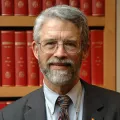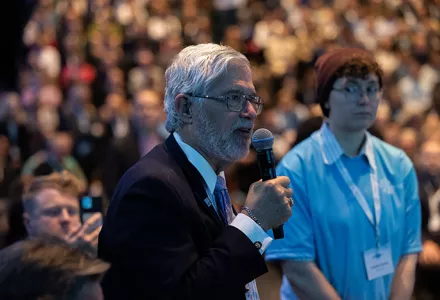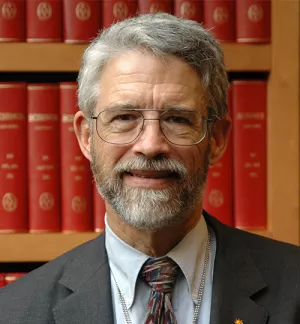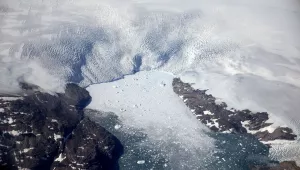Why does the Arctic Circle Assembly matter?
John: The Arctic Circle Assembly, launched in 2013, has grown in magnitude and importance over the last decade.
The annual meeting is an unmatched opportunity to catch up with the latest developments in Arctic science and policy, to present new ideas about both to the most diverse audience of Arctic scholars, policymakers, and influencers available in one place anywhere, and to network with partners and potential partners in Arctic science, policy, and advocacy.
The 2500 participants in the meeting this year included foreign ministers and science ministers from many Arctic nations; the Ambassadors to the Arctic from the countries that have them (including recently confirmed US Ambassador at Large for the Arctic, Mike Sfraga); senior representatives from the US departments of State, Defense, Interior, Homeland Security, and Energy, as well as from NASA, NOAA, NSF, the US Coast Guard, and the White House; leaders from most of the world’s Arctic-focused think tanks and NGOs; indigenous leaders from across the Arctic; top Arctic researchers and policy analysts; and and diverse private sector interests.
There was a strong Chinese presence at the Arctic Circle Assembly this year. What have you learned about their interest, research and presence?
China characterizes itself as a “near-Arctic” nation and has been sending participants to the Arctic Assembly for years. This year the top Chinese participant was Liu Zhenmin, the Chinese government’s Special Envoy for Climate. Liu, who served previously as China’s Vice Minister of Foreign Affairs and as Under Secretary General of the UN Department of Economic and Social Affairs, is the most senior Chinese official ever to attend the Arctic Circle Assembly and his presence there was clearly intended as a signal of the growing importance the Chinese government attaches to its activities in the Arctic. Liu was a featured speaker in two plenaries at the meeting, and he stood for questions from the moderator and from the audience at both. He discussed China’s commitments related to global climate change in some detail, explaining China’s interest in the Arctic in part by noting that rapid climate change in the Arctic is affecting Chinese weather patterns and sea-level rise, giving that country reason to participate in research to better understand the Arctic’s climate future. He also mentioned China’s strong interest in the Arctic shipping routes being opened by declining coverage of Arctic Ocean sea ice. He did not discuss, that I recall, China’s recent participation with Russia in joint operations involving naval vessels and military aircraft in the Arctic.
It has been two years since Russia’s invasion of Ukraine. What are policymakers most concerned about in the Arctic?
Putin has been characterizing the Arctic as a domain of great strategic importance to Russia publicly since 2013. Accordingly, Russia has been building up its military forces and capabilities in the Arctic quite conspicuously ever since. That was already a security concern for the United States and its allies in the Arctic region, even before Russia’s invasion of Ukraine, in the face of uncertainty about Russia planned to use its growing Arctic capabilities.
The brutal invasion of Ukraine, after repeated promises not to do so, made plain to everyone Putin’s willingness to use military force in what every way he pleases; the resulting enhanced concern about what he might do in the Arctic surely played some role in the decisions of Sweden and Finland to join NATO.
At this year’s Arctic Circle, there was an overwhelming sense that great power competition and global geopolitical instability have reached the Arctic. In particular, challenges now thought to be posed by Russia military capabilities in and around the Arctic, amplified by increasingly clear evidence of China’s willingness to join forces with Russia in the region, were the focus of a very hard-hitting speech by US Admiral Rob Bauer, Chair of NATO’s Military Committee, at the closing plenary of this year’s Arctic Circle Assembly.
Russia’s invasion of Ukraine and its resulting disappearance for nearly all forms of cooperation around Arctic issues has also stoked broader concerns about how collaborative research on the impacts of rapid climate change in the Arctic and international cooperation in Arctic governance to address those challenges can function without Russia, which is the biggest player in the region in terms of population, land area, and territorial seas. In this context, the need for and the importance of science diplomacy was another dominant theme at the conference.
If you could accelerate or fully fund a single U.S. climate policy affecting the Arctic region, which would it be and why?
I prefer to list four. First, we need to accelerate internationally collaborative climate-science research to better understand not only the impacts of rapid Arctic climate change in the region but also the ways in which Arctic climate change is affecting and will continue to affect weather across the northern hemisphere and sea-level rise worldwide.
Second, motivated by what we already know about those impacts, we need additional policies to accelerate U.S. progress on reducing on national emissions of greenhouse gases, in parallel with increased diplomatic efforts to get other countries to do the same, because reducing global greenhouse-gas emissions is the only reliable way to slow the pace of rapid warming in the Arctic and, thus, to slow the growth of all of its impacts worldwide.
Third, we need to greatly increase Federal support for climate-change-adaptation efforts in the U.S. Far North, along with increased support for international collaboration on such adaptation, because the people of the region—many of them Indigenous—do not have the means by themselves to limit the harm ongoing climate change is causing to their health, their businesses and subsistence, and their communities and cultures.
Fourth, we need to improve the capacities of our Coast Guard and navy, and our commercial vessels to operate in the Arctic by accelerating the construction of additional icebreakers and Arctic and near-Arctic ports to support them.
What was your biggest takeaway from this year's meeting?
My biggest takeaway from this Arctic Circle Assembly, by far the most heavily attended to date, is that the wider world is finally waking up to the reasons—long known to the people of the region—that the changes attendant upon rapid climate change in the Arctic are a challenge for all of us.






